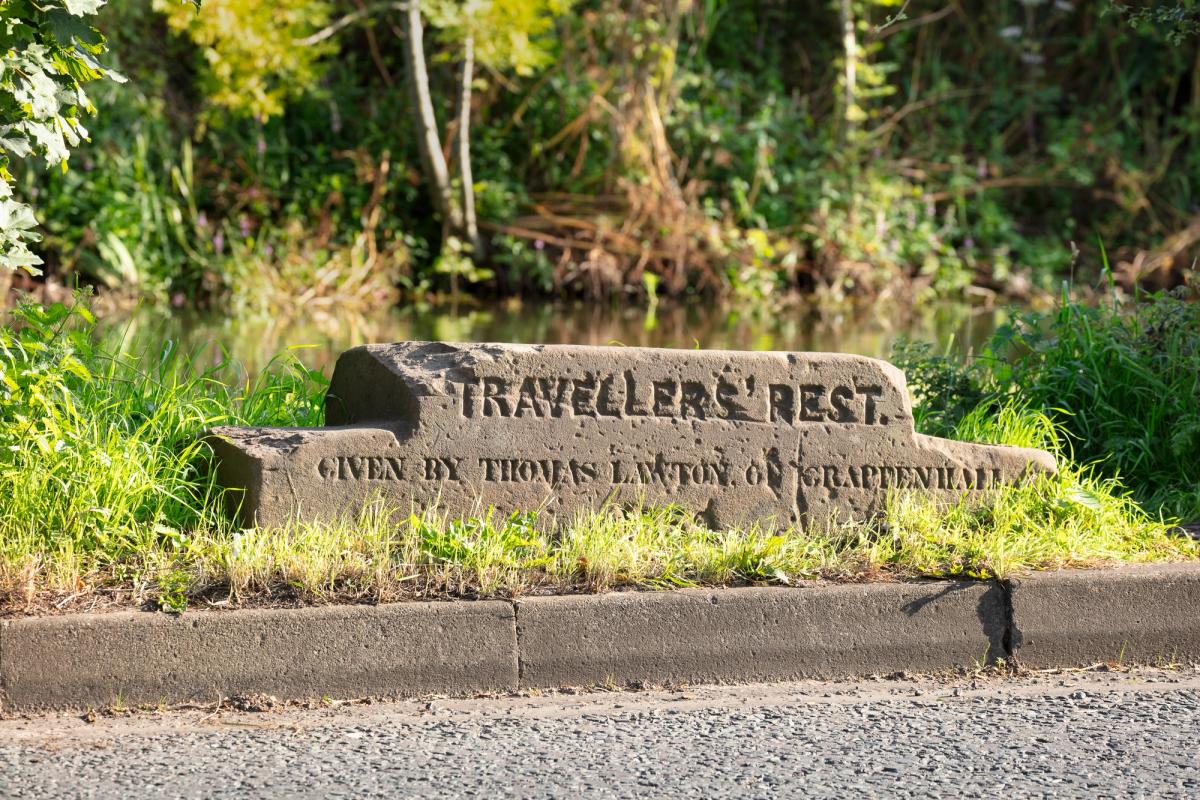In the late 19th century, modest blocks of stone by the roadside would have been a welcome sight to footsore labourers, many of them Irish, trudging many miles to find agricultural work.
Spaced roughly two miles apart on roads between Liverpool and Manchester, some still bear the inscription “Travellers’ Rest”—and they have been newly identified and listed Grade II as a touching piece of Victorian philanthropy.
Previously thought to be mounting blocks for travellers on horseback, they have now been recognised as intended for much humbler wayfarers, thoughtfully designed stone benches with a comfortable seat slightly domed so rainwater would run off, enough room for a companion or to keep baggage up off the muddy ground, and a lower step for a child or as a footrest for a nursing mother.
Only a dozen are thought to survive of many more originally installed from 1860 on, and many of those have been damaged, altered or moved. The two on the outskirts of Warrington in Cheshire, at Red Bank and the Stag Inn, have now been listed for the first time by the UK government on advice from Historic England, and the records for four others which were already listed have been revised to explain their true history. One of those newly listed is now on a traffic island, and another has survived on the forecourt of a filling station.
They were all the inspiration of a local doctor, James Kendrick, who gave the two Warrington stone benches, and found donors to copy his example and design.
At least 30 are thought to have been installed, ten along the road between Liverpool and Warrington—all now missing—and others between Warrington and Manchester.
Kendrick was also a notable scholar and amateur archaeologist, and a benefactor of the Warrington museum and library. He was inspired to do something for the travelling poor by another philanthropist Charles Melly, who had given public drinking fountains to Liverpool.
Kendrick carefully designed his benches, made of sandstone and carved by local stonemasons, so that they would comfortably support an adult leaning forward with elbows resting on knees. He would have seen countless Irish labourers passing along the roads looking for harvest and other agricultural work, at a time when hundreds of thousands emigrated from Ireland to Liverpool in the wake of the Great Famine of the 1840s, and the evictions and land clearances which followed. They would have been used by many other poor travellers however, at a time when the working life for many was a weary trudge between short periods of employment as farm labourers or domestic servants.
Kendrick’s benches have now worn inscriptions reading “Travellers Rest” and others have the donors’ names, or bible verses including “Come Unto Me Saith the Saviour”—the original verse continues “and I will give thee rest”—and the dates, all around 1860.
Duncan Wilson, the chief executive of Historic England, said it was right that the hard lives of the migrant workers should be recalled and marked.
“These Travellers’ Rest stones were a thoughtful, well-designed and welcome place to rest for migrant workers and their families, many from Ireland, who walked miles to find work harvesting crops. It’s right that these journeys should be remembered by the listing of two new Travellers’ Rest stones in Cheshire. They illustrate the incredible diversity of our heritage and its capacity to shed light on different aspects of past lives.”


